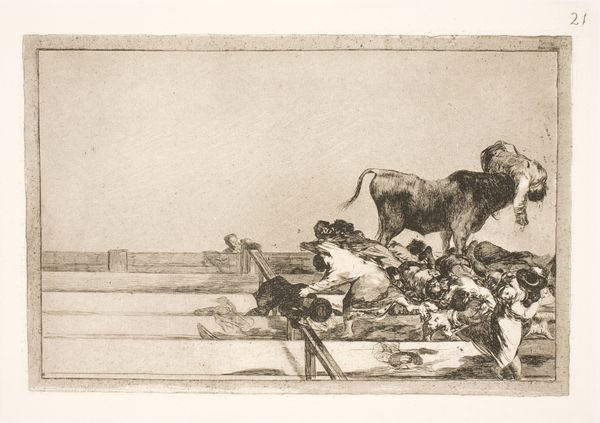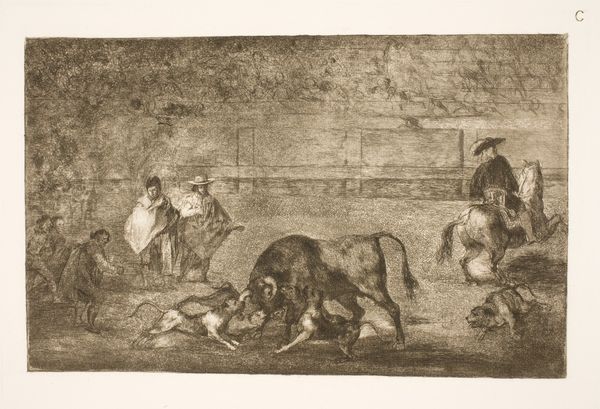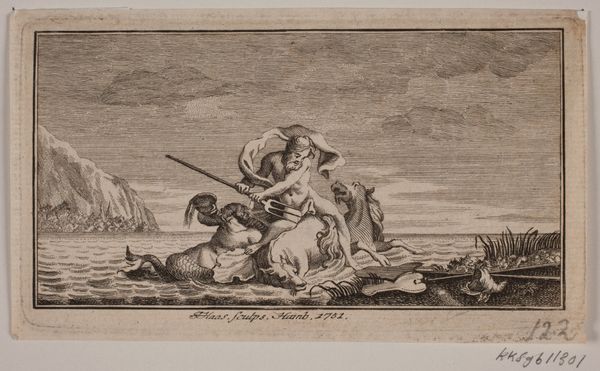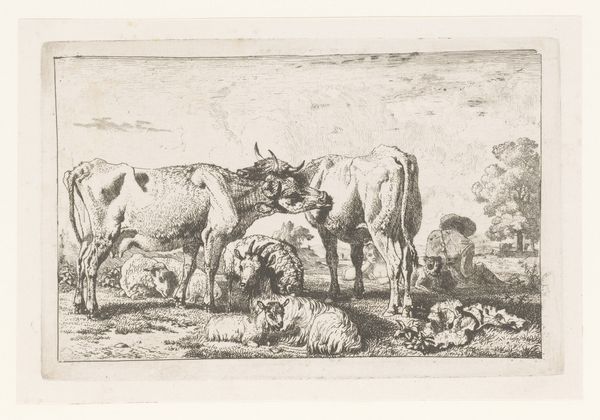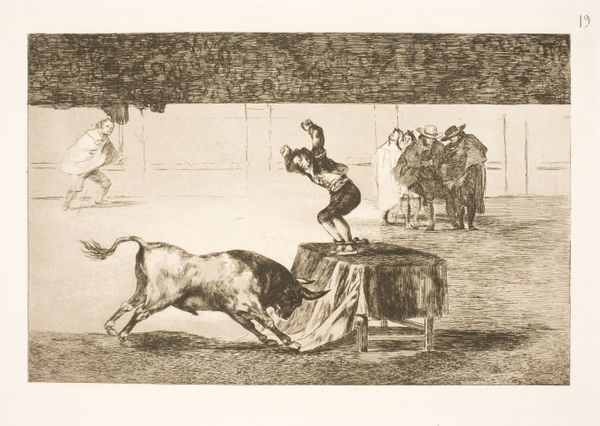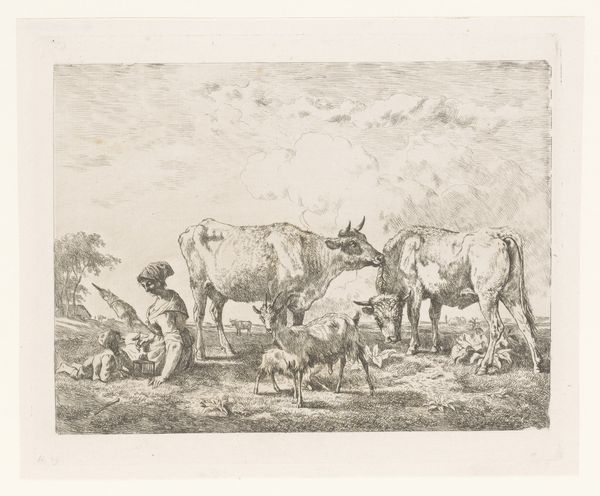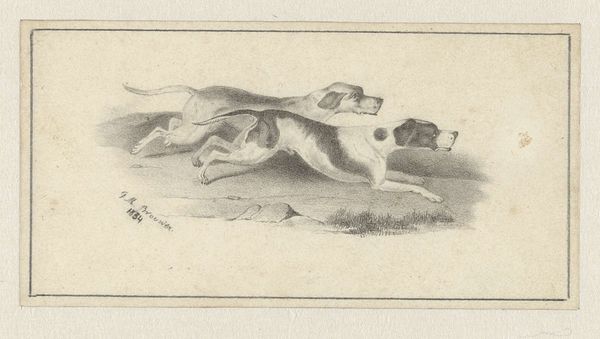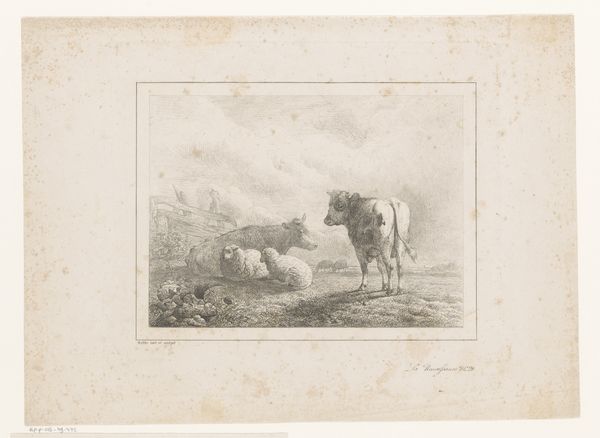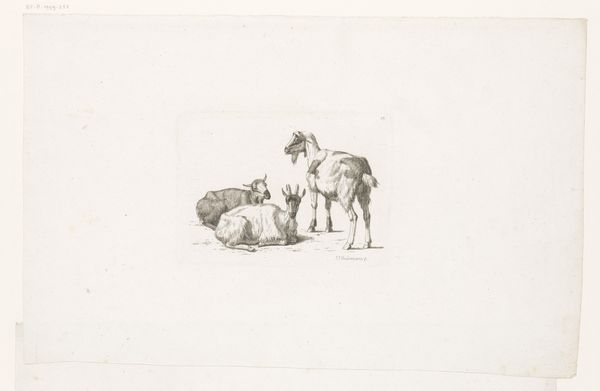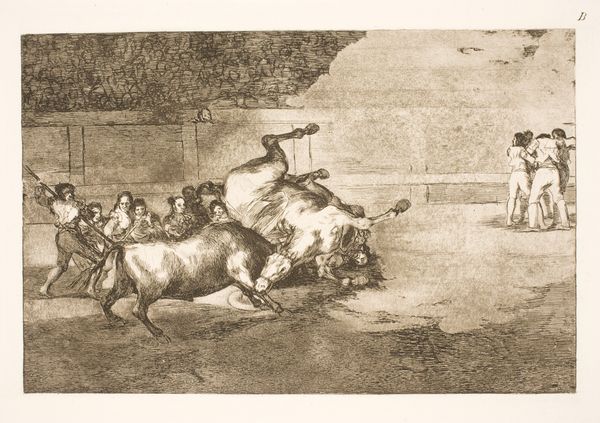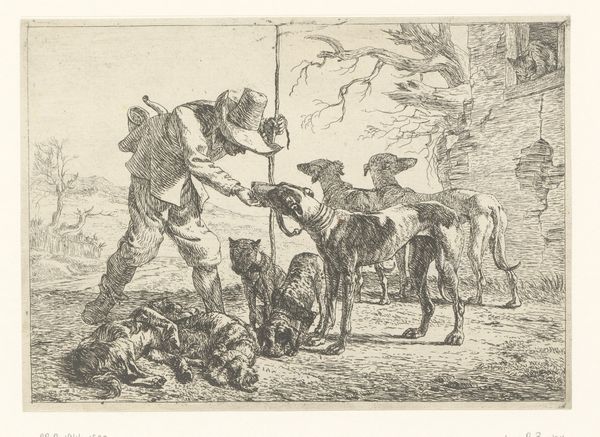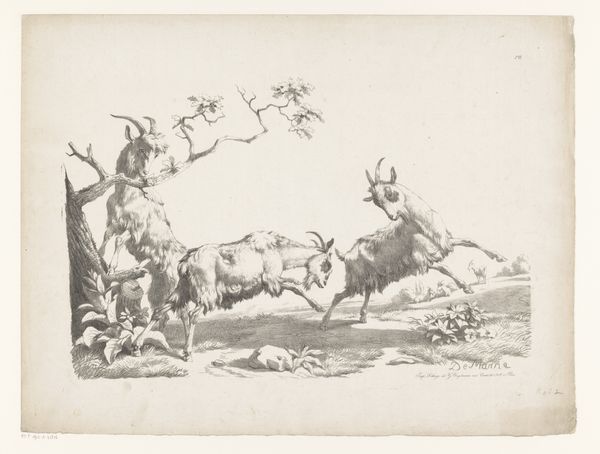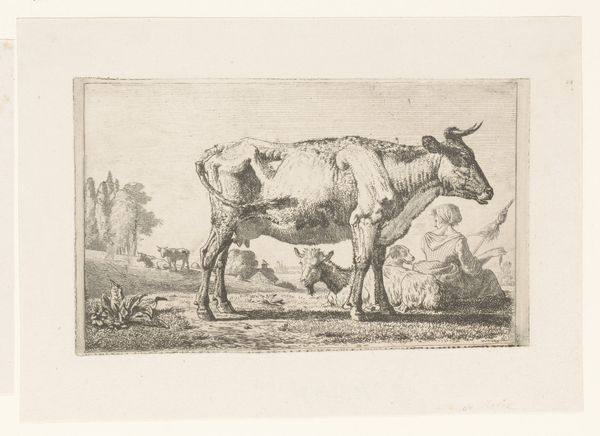
Frygtelige begivenheder på de forreste rækker i arenaen i Madrid og borgmesteren i Torrejon's død 1815 - 1816
0:00
0:00
print, etching, intaglio, engraving
#
narrative-art
# print
#
etching
#
intaglio
#
figuration
#
romanticism
#
history-painting
#
engraving
#
realism
Dimensions: 246 mm (height) x 355 mm (width) (plademaal)
Curator: Immediately, this etching arrests me with its stark brutality; the angular lines and chaotic composition really amplify the scene's horror. Editor: Indeed, it’s quite powerful. What we're observing is "Terrible Events in the Front Rows of the Madrid Arena, and the Death of the Mayor of Torrejon," an intaglio print made by Francisco de Goya between 1815 and 1816, currently held here at the SMK. Curator: Goya’s masterful use of aquatint granulation in the shaded areas creates an unnerving contrast against the highlights, focusing our attention on the twisted bodies. He uses an organized approach to disorganize our senses through his artistic style, as one of the main representatives of Spanish Romanticism. Editor: Absolutely. Bullfighting was a major element of Spanish social and political culture. These arenas are places where societal roles and identities, class tensions, and power were played out publicly. That context elevates this work from a mere depiction of a tragedy to a broader commentary on mortality and public spectacle. Goya himself was almost deaf when the incident depicted took place, during one of the many royal bullfights put on in honour of King Ferdinand. Curator: I notice Goya's deliberate positioning of the bull, it is almost a symbol of inescapable fate. The animal is centrally placed with almost godlike domination over the entire foreground action, isn't it? The bull's darkness versus the dying spectators, placed in a sort of a dramatic choreography... The artist, with his conscious use of value and structure, succeeds in forcing viewers to relive that fateful historical moment. Editor: And don't overlook the composition’s perspective. The upward angle pulls us right into the thick of the pandemonium, blurring the distinction between viewer and participant. One must also note the complete and utter realism of Goya; rather than just glorifying heroic matadors as other artists had done at the time, Goya is depicting actual suffering in society. Curator: Studying the etching, with Goya's skilled manipulations, reinforces the tragic narrative through his deployment of light and shade as if to highlight specific emotions—the terror, agony, chaos. Editor: It really speaks to Goya's critical role not only as an artist, but also as a social commentator of his tumultuous period. We also can tell he intended to depict something terrible enough that happened at one of the main places of public celebration for Spanish society, Madrid's bullfighting arena. Curator: This work presents itself to me as a profound intersection of skill, composition, and commentary that amplifies the drama, inviting introspective contemplation. Editor: Indeed. A sobering reminder that art often holds a mirror to the more unsettling truths of humanity's theater.
Comments
No comments
Be the first to comment and join the conversation on the ultimate creative platform.
